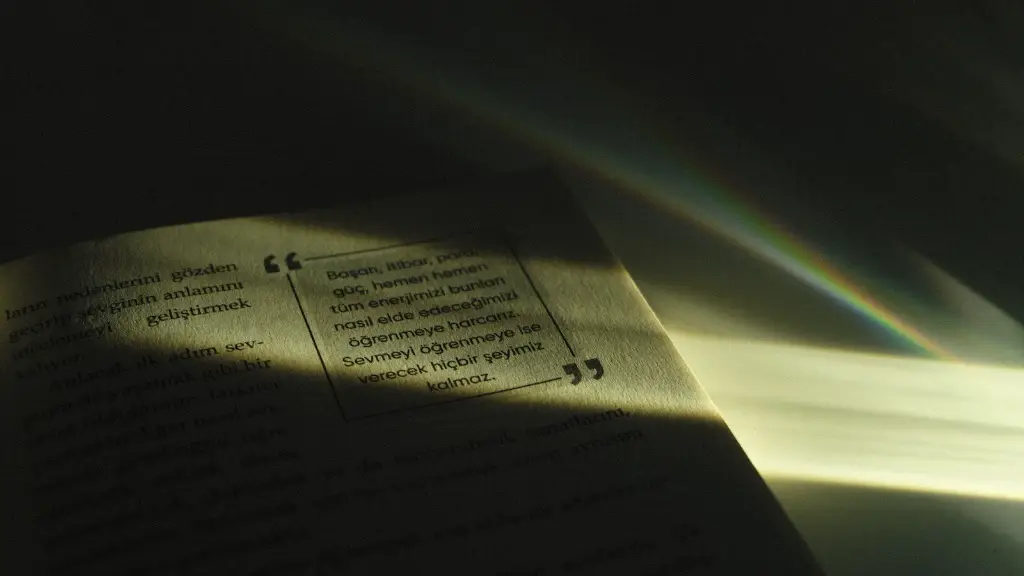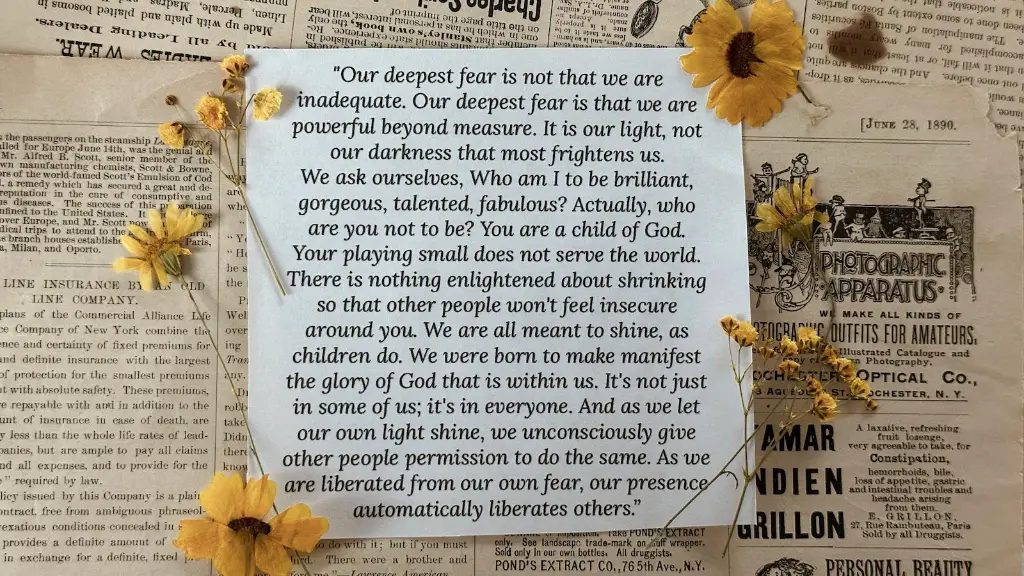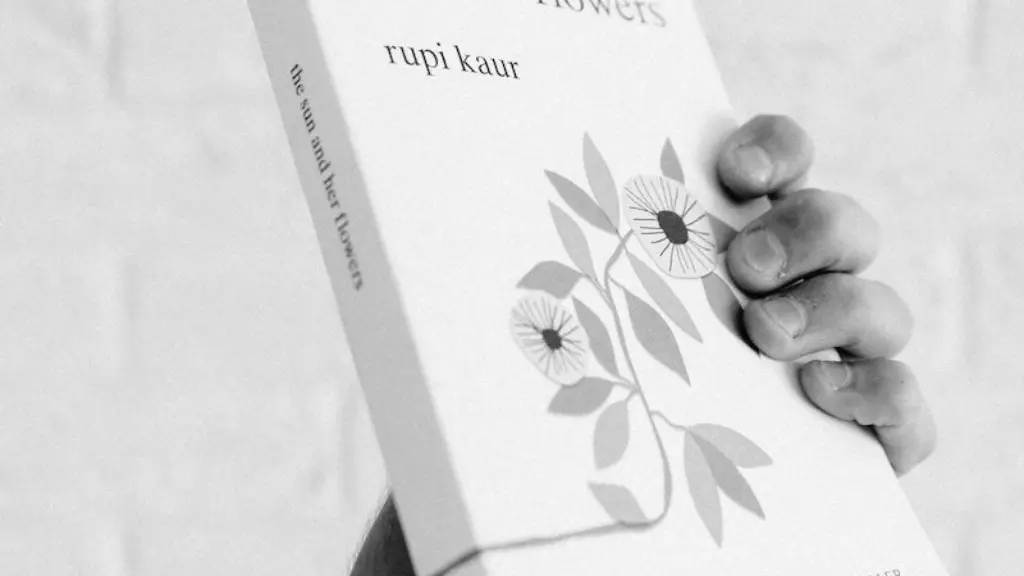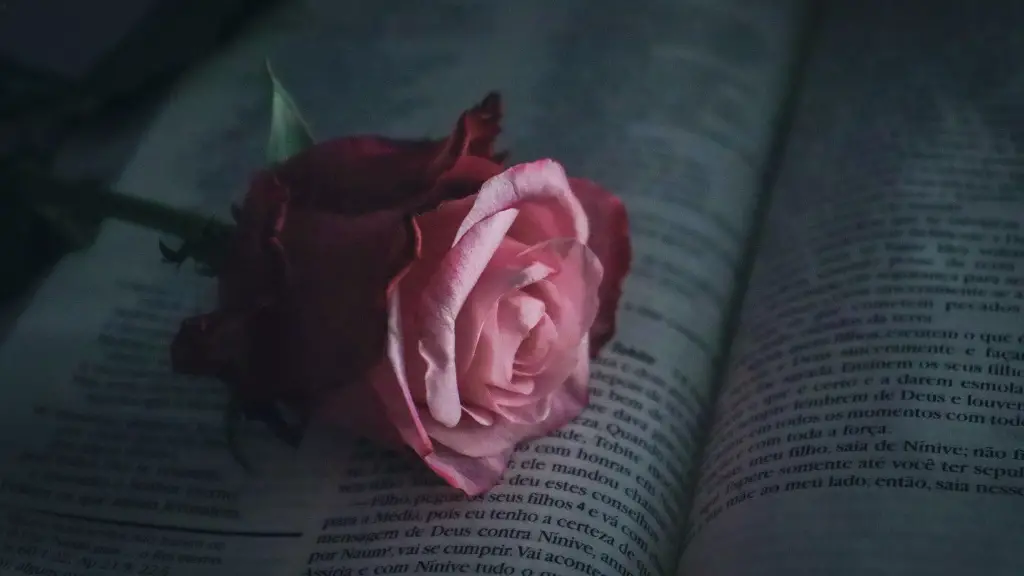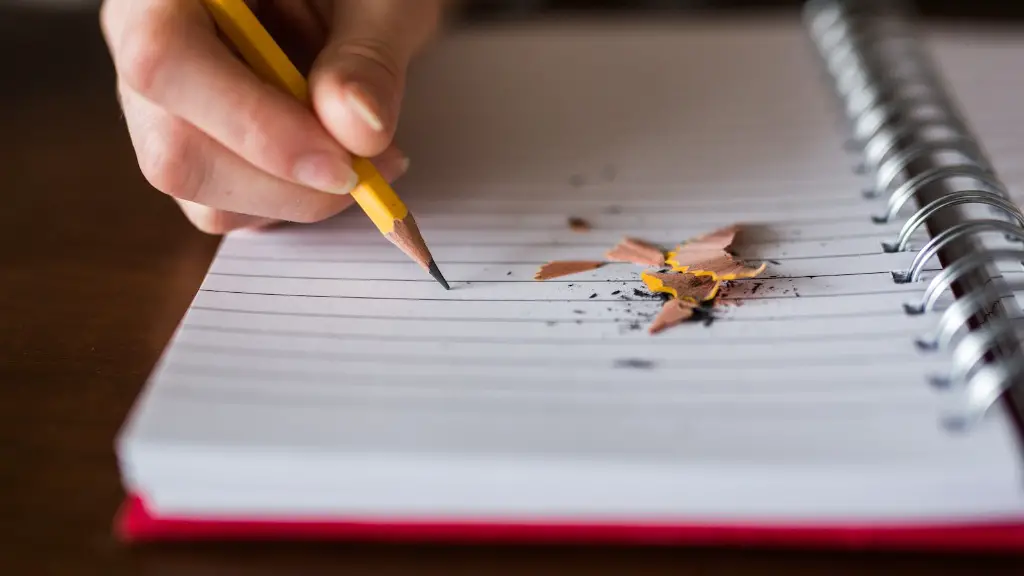Imagery in poetry is a powerful tool used to evoke a reaction from the reader. Imagery is the use of vivid and descriptive words to create pictures in the mind of the reader. By using vivid imagery through words, the author is able to craft a vivid picture in the mind that creates emotions, feelings and experiences. Using imagery, poets are able to stir emotion and transport the reader to a different world.
At its most basic level, imagery is the creation of vivid pictures in the reader’s mind. When a poet uses imagery, they are employing both the denotative meaning of words as well as the connotations associated with the words used. Poets use imagery to create mental images and link them to their own thoughts and feelings. Imagery can be used to evoke emotions from readers such as joy, sorrow, anger and fear. By using figurative language, poets can create vivid pictures that evoke powerful emotions in the reader.
Imagery can be used for a variety of purposes, from setting a scene to developing characters. In the poetic context, it is used to bring scenes and characters to life, to create mood and atmosphere, and to evoke emotion in the reader. Imagery can be used to create a vivid picture of a moment or to reflect an emotion. By cleverly combining images and words, the poet is able to create powerful pieces of art.
Imagery is often used to compare two things to one another. Metaphors and similes are the most common types of comparisons used in poetry. Metaphors compare two things without using the words “like” or “as.” Similes are a type of metaphor that do use the words “like” or “as.” Both metaphors and similes can be used to create vivid pictures that evoke emotion in the reader.
Personification is another type of imagery. Personification gives human characteristics and qualities to non-human things. This is used to create vivid and effective images for the reader. Personification is often used to evoke a range of emotions from readers and to create strong images in their minds.
Imagery can help to develop a story by highlighting key ideas and allowing the reader to interpret their own meanings. It helps to eliminate ambiguity, making the poem easier to understand. Imagery can also help to create powerful connections between the poem and the reader, as the reader will be able to interpret the poem in their own way.
Symbolism is also used by poets to create powerful imagery. Symbols are objects, animals or colours that represent something else. They can be used to represent themes or conflicts in the poem, and to evoke emotion and feelings. For example, a dove can be used to symbolise peace and calm, while a storm cloud can be used to symbolise chaos and turmoil.
Evocation of Feeling
The use of imagery in poetry can evoke a range of emotions from the reader. By using vivid words to describe the emotions felt by the poet, the reader can better understand the poem and be moved by the power of the words. Imagery can be used to bring the poem to life, adding depth and meaning to the poem. Imagery can be used to cultivate empathy in the reader, allowing them to connect and relate to the poem on a deeper level.
For imagery to be effective, it needs to be vivid and specific. Using generic words will not evoke feelings, and readers will not be able to relate to the poem. By using strong and vivid words to describe a scene, the reader will be able to vividly visualise what is happening, increasing the emotional impact of the poem.
Imagery can also be used to evoke feelings of nostalgia. By using words to paint a picture of a time or place, the reader can be transported back to a time or place in their life, creating a powerful emotional connection with the poem. By using imagery, the poet is able to evoke powerful emotions from the reader.
The Power of Imagery
Imagery is a powerful tool in poetry and can be used to take the reader on an emotional journey. By using vivid words to create pictures in the readers mind, the poet is able to stir emotion and transport the reader to a different world. By carefully crafting words, poets can craft powerful pieces of art that will emotionally move the reader.
Imagery is often used to evoke emotions from the reader, such as joy, sorrow, anger and fear. By using carefully chosen words, the poet can create vivid images that the reader will be able to relate to and understand. By carefully selecting words to evoke emotion, the poet is able to create powerful pieces of art that will move the reader.
Imagery can also be used to compare two objects. Metaphors and similes are often used to evoke strong emotions from the reader. By comparing two things, the poet is able to create vivid pictures that resonate with the reader. Personification is another type of imagery used to give human characteristics to non human things, creating powerful imagery for the reader.
Symbolism is also a powerful tool used to create powerful imagery. By using objects or animals that represent certain ideas, the poet can evoke feelings of power and meaning in the reader. By cleverly choosing words to create powerful images, the poet can create powerful pieces of art that resonate with the reader.
Creating Meanings
Imagery can also be used to create new meanings. By using vivid words, the poet can create a story and invite the reader to interpret their own interpretation of the poem. Imagery can help to create links between the poem and the reader. It can help to create powerful connections as the reader is able to interpret the poem in their own way. By creating vivid images through words, the poet can invite the reader to explore the poem and create powerful connections.
Imagery can also be used to create a sense of atmosphere. By painting vivid pictures and carefully selecting words, the poet can create a mood and atmosphere in the poem. By carefully and thoughtfully combining words and images, the poet can create a powerful piece of art that evokes emotion in the reader.
Imagery can also be used to create illusions and bring scenes to life. By using vivid words and careful description, the poet is able to create beautiful imagery that the reader can connect to. Through the use of words, the author can create a vivid and powerful world that will capture the reader’s imagination.
Imagery is a powerful tool used in poetry to evoke emotion and create vivid pictures in the reader’s mind. By carefully and thoughtfully choosing words to create images, the poet can craft powerful pieces of art that will move and inspire the reader. By creatively combining words, the poet can create powerful pieces of art that will stay with the reader long after the poem is read.
Exploring Imagery
Imagery can be explored in a variety of ways. By carefully and cleverly selecting words, poets can create vivid pictures that will move and inspire the reader. By examining the words used by the poet and analyzing the images created, readers can gain a deeper understanding of the poem and explore the themes explored by the poet. Reading poetry can also help to increase understanding of poetic imagery.
Imagery also has its roots in art. By examining works of art, readers can gain a better understanding of how imagery can evoke emotion and transport the reader. Literature can also be a good source of reference when exploring imagery as literature often uses imagery to evoke emotion and transport the reader to different worlds.
Imagery can also be explored through conversation and discussion. By discussing works of literature, readers can exchange ideas and gain a better understanding of how imagery can be used to evoke emotion and create powerful pieces of art. By discussing different pieces of art, readers can gain a better understanding of the power of imagery.
The use of imagery in poetry is a powerful tool used to evoke emotion and create powerful pieces of art. By carefully and cleverly selecting words, readers can create vivid pictures that will move and inspire the reader. By exploring the power of imagery, readers can gain a better understanding of how it can be used to create powerful pieces of art that will stay with the reader long after the poem is read.
Conclusion
Imagery in poetry is a powerful tool used to evoke emotion from the reader. By carefully choosing words to create vivid images, the poet is able to craft powerful pieces of art that will move and inspire the reader. Through the use of imagery, poets can create vivid pictures that evoke powerful emotions in the reader. By exploring and analyzing works of art and using conversation to discuss imagery, readers can gain a better understanding of how imagery can be used to evoke powerful emotions and create powerful pieces of art.
